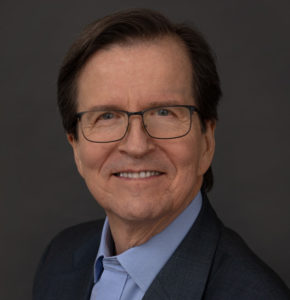
The contraction of both supply and demand of long-term care in the United States is becoming acute, especially given the flexibility needed for what lies ahead.
The sector was in very serious shape in the “before times” (prior to the pandemic) and is now enduring severe contractions. For hospitals unable to discharge patients, this contraction is backing up the system, creating a backlog that restricts new and occasionally exigent admissions. Patients unable to be discharged to skilled care are at risk because either they’re exposed to hospital-related risks for longer, or they’re sent home without the advisable care or supervision.
Disappearing nursing homes
The number of nursing homes is decreasing, and the rate is accelerating. Three hundred and six (306) closed from 2018 through 2021, and we’re on track to lose ~150 in 2022 alone.
The contraction is due to many plausible causes. Occupancy among SNFs went from 80%+ in 2018 to 71% in 2022. But the most painful factor may be the changing intermediary coverage, with fewer Medicare and other high-paying beneficiaries and more Medicaid beneficiaries.
For nursing centers, the “before times” had already seen declining demand, with insurance intermediaries preferring to send patients home with care as opposed to more expensive nursing centers.
Now, with the impacts of COVID-19 and the loss of long-term care workers in the US, nursing homes and home care agencies are struggling to fill open positions and are turning away new admissions because they are unable to care for them. Home care providers experienced growing demand prior to the pandemic, and since COVID ravaged nursing centers, the existing preference for receiving care at home has been reinforced. This highlights another contraction: workforce.
Honey, I shrank the workforce
The workforce in long-term care in the “before times” was flexible and more or less available. Since the pandemic, however, about 223,000 of these workers have left and not re-entered the sector.
In the before times, there were about 4.5 million people working in the long-term care workforce, with about 33% in nursing centers — that’s about 1.49 million workers. Kaiser Family Foundation reports that 15% of that workforce in nursing care centers (~223,000) have not fully returned to the workforce. Other segments are recovering, but not nursing centers.
With the unemployment rate so low, and the workforce participation rate so high, financially constrained nursing centers will have difficulty attracting this workforce away from the jobs to which they fled during the pandemic.
What does the future hold? Look 80-85 years in the past
We should all be concerned about the immediate future of the long-term care sector. For many nursing centers, especially those caring for some of the poorest and most vulnerable, the near-term future is closures, which have already started. In some marketplace areas, these closures are “adjustments to the available supply” and, while painful, might be positive if there are other centers that can take up the slack of both demand (patients) and supply (workforce).
The patterns of closures seem to be focused more in rural marketplace areas, where closures leave those communities without a vital resource of care and employment, forcing families to seek care farther away. This creates further backups and service delays.
Aging demographics are about to reverse a long decline in age-qualified demand. In 2020, those who were born in 1935 turned 85, which marks the lowest recorded number of live births in the U.S. Starting in ~2030, the number of people surviving to 85 increases steeply.
The oldest of the Baby Boom generation reaches 80 in 2025 and 85 in 2030. From 2030 through 2039 ~40 million Americans will survive to their 80s and need care. Reasonable estimates are that by 2050, the US will need another 990,000 to 1.3 million skilled nursing beds and even more home care episodes. Imagine this surging demand seeking care without adequate or appropriate built environments or workforce!
Adult children will shoulder the growing burden of care from 2030 – 2039 because resources outside the home may not be available. The scale of this social and economic burden will be onerous. Employers in every sector will struggle with progressively declining productivity as adult children juggle the care of their aging parents.
The sector has been the poor and (mostly) neglected stepchild of the U.S. healthcare system, and it is about to endure even more tribulations as angry families and providers wonder, “Where’s the help when I need it most?”
Only aggressive, sector-lead public policy changes will create the flexibility required to meet these challenges. These include:
- A federal Hill-Burton style finance guarantee for new construction;
- Lowering of barriers to cross-continuum collaborations;
- Immigration programs to increase nurses, CNAs, and caregivers;
- New universal worker roles, and;
- Federal long-term care insurance to eclipse the current, dysfunctional operating payment systems.
The flexible sector
The remedy for this situation, to prepare for the imminent future and to avoid even more fatal contractions, the US needs a comprehensive, coordinated approach to make the sector far more flexible and adaptive.
- Rebuild the aging infrastructure
Most nursing homes in the US were built between 1955 and 1965, so the average nursing center infrastructure is ~60 years old — and showing its age. Very few new construction was undertaken more recently because of Certificate of Need requirements. This means that most of the current nursing homes were designed and bult by people born between 1915 and 1925. These designs contributed to the very high COVID-19 related illness and death rates in nursing centers.
Isn’t it time to rethink and rebuild the infrastructure?
Flexible structures include both large and small designs to adapt to both locations and consumer preference.
- Overhaul program regulations
The programs that serve persons of age are a virtual Gordian knot that needs to be cut through by innovation. Does hospice work effectively with residential skilled care providers? No, because there are perverse incentives. Do pharmacies that serve these populations coordinate prescriptions and dosages? No, because of counter-intuitive regulations and incentives. There are dozens of these instances where program rules and regulations were put in place in order to protect the consumer or prevent fraud but have become overlapping prohibitions against innovation.
Isn’t it time to rethink these conflicted regulations?
Flexible regulations would include many of the CMS promulgated innovation models.
- Resurrect & revise immigration policies
The current workforce shortage is well known, and will not be significantly mitigated even if hourly payment were increased to fair market rates. There just aren’t enough people! This is due to the overall workforce participation rate and demographics. The U.S. needs to resurrect the retired H-1A Visa for foreign nurses (enacted by the Nursing Relief Act of 1989, this program expired in 1995) and expand it to new categories of caregivers.
Who will care for the soon to be burgeoning aged population?
Flexible workforce standards would also allow for the “universal worker” to perform multiple, flexible roles in both the consumers’ homes and institutional settings.
- Efficiency & technology
It is axiomatic that when workforce is constrained, technology is developed and deployed to reduce the “labor inputs” needed. For example, we’re all learning how to navigate self-checkout at the store! The U.S. leads the world in health information technology (HIT), yet long-term care is explicitly excluded from accessing resources to deploy these breakthroughs.
Isn’t it time to include long-term care among the sectors benefiting from “meaningful use,” which sets the criteria for those able to receive incentives for deploying EHR? Flexible IT systems would allow seamless, secure access to EHR data between and among hospitals, doctors, as well as pharmacies, home health agencies, skilled nursing, and home and community-based providers.
Fatal contraction to flexible disruption
The current situation and the imminent demographic changes will create a whipsaw effect for which we all need to prepare, i.e., providers, regulators and planning agencies. What is offered here are only a few suggestions. The recent NASEM report and the subsequent planning groups which it spawned are good first steps toward the profound disruptions required to transform long-term care.
Political action, rather than recrimination, is what’s needed. Protections as well as required equity and transparency must be embedded into everything.
While long-term care is a small segment of the enormous U.S. healthcare system, its importance is becoming progressively more apparent. Disruptive change is urgently needed to make it far more flexible and better able to adapt to the imminent increase in both the quantity and quality of demands.
Irving Stackpole is President of Stackpole & Associates, an independent consultancy in healthcare, senior living & human services. www.StackpoleAssociates.com, [email protected].
The opinions expressed in McKnight’s Long-Term Care News guest submissions are the author’s and are not necessarily those of McKnight’s Long-Term Care News or its editors.




